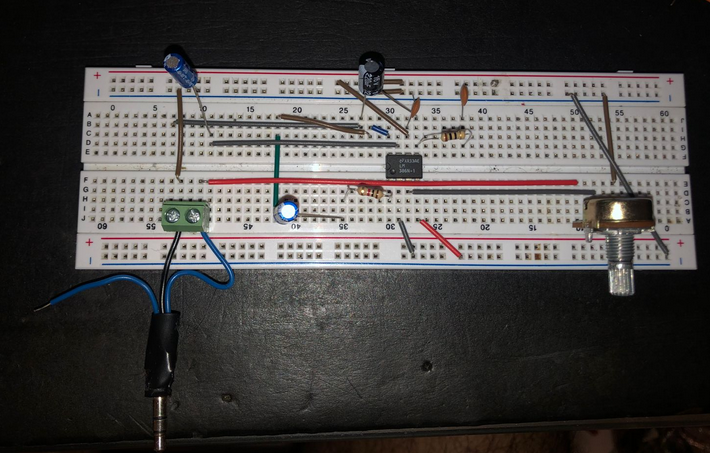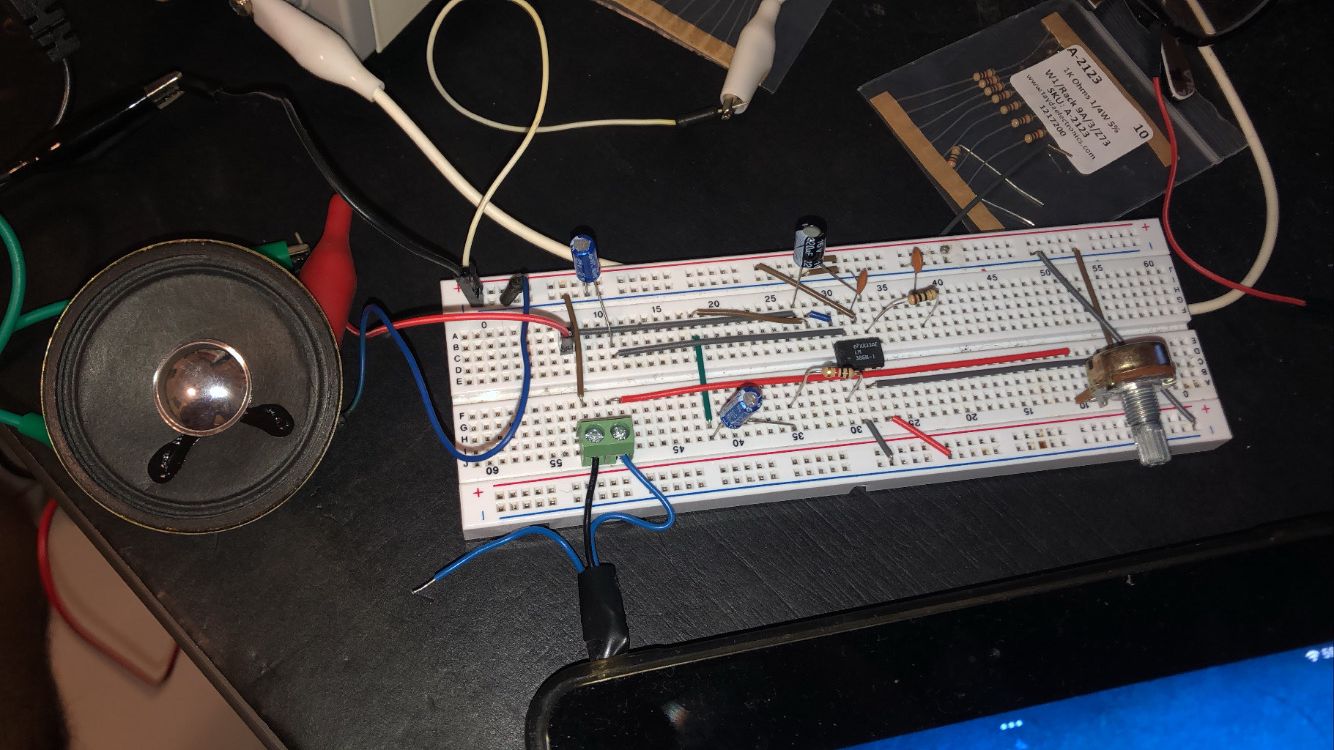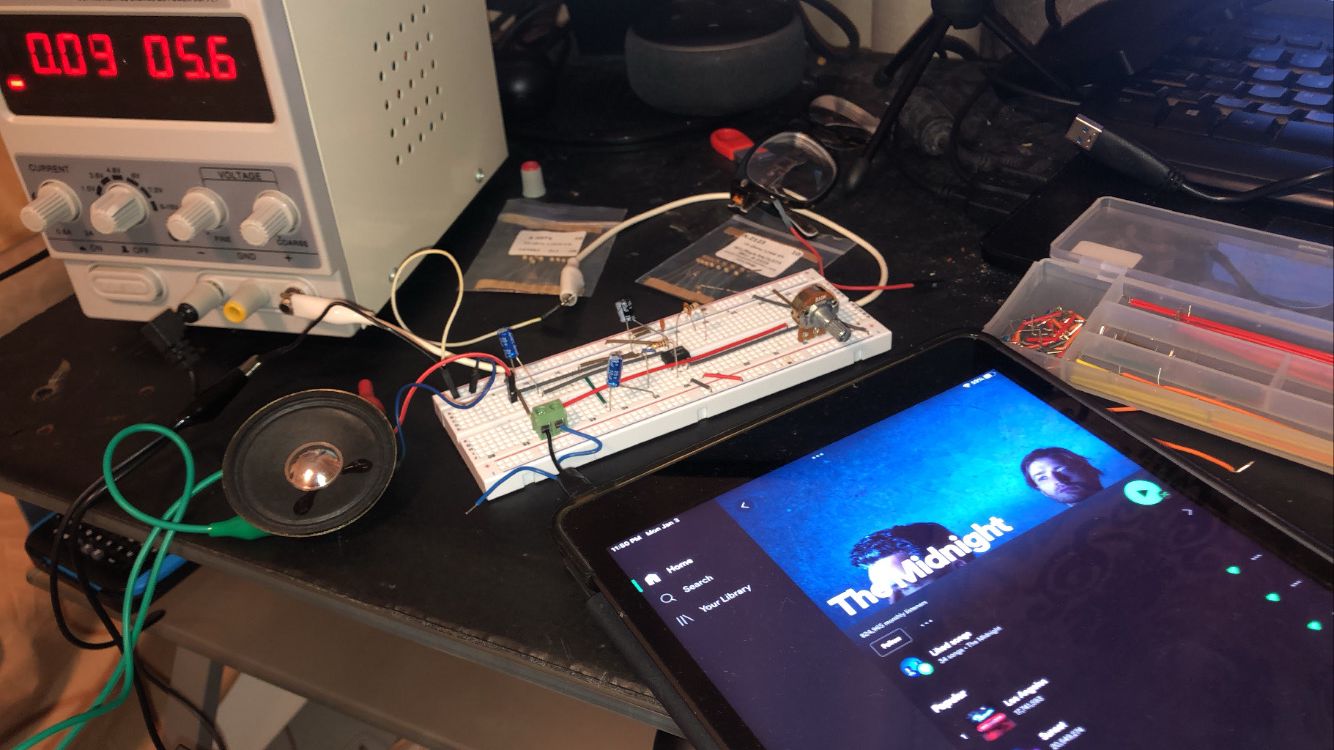Hi Community!
The LM386 is an operational amplifier that has been created primarily for audio applications. This means that its performance is predicated on the fact that it will be driving speakers. At the very least, at some point. It can, however, be used as a conventional op-amp, just like most other basic audio amplifier chips. It has a 20x gain by default, which means it will multiply the voltage it receives on the input by 20 times before sending it on to the output. If necessary, the gain value can be changed.
Materials
- • R1—10 Ω
- • R2—1.2KΩ
- • VR1—10KΩ Potentiometer
- • C1, C2—0.1uF 50V Ceramic
- • C3,C4—10uF 25V Electrolytic
- • C5—220uF 16V Electrolytic
- • IC1—LM386, Low voltage audio amplifier
- • SP1—8 Ω 0.25W speaker
- • B1—Battery, 9V
IC Datasheet Information
- • Give enough power—Common Power of the output is about 700mW at VS=9V, RL=8Ω, THD=10%.
- • Use Wide supply voltage range of 4V to 15V.
- • Use low supply current—if no input signal is approx 4mA or max 8mA.
- • Internal voltage gain set to 20 or 26dB.
- • The more voltage gain to 200 or 46dB. When we connect a 10uF capacitor across pin 1 and pin 8.
- • We may use a resistor in series with the capacitor. To reduce the gain between 20 and 200.
- • Low harmonic distortion: 0.2% typical
- • Frequency bandwidth: 300kHz in typical
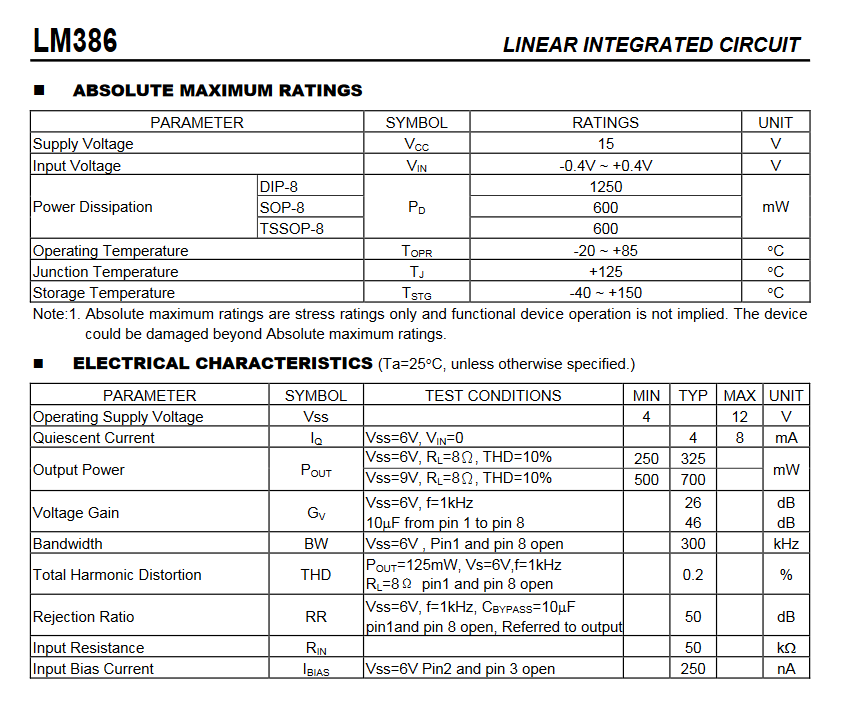
IC Datasheet Pinout
- Pin 1, 8 - Gain: Pins 1 and 8 are utilized to change the gain level from the default of 20x by utilizing particular capacitor values.
- Pin 2 - Negative Input
- Pin 3 - Positive Input: These are the standard inputs for op-amps. The negative input of a simple LM386 circuit is usually connected to ground, while the positive input receives the audio signal from the source.
- Pin 4 - GND
- Pin 5 - Vout: Pin 5 is the op-amp output, which is the amplified signal we send to the speaker in this case.
- Pin 6 - Vs: The power required to operate the amplifier is delivered to the Voltage Supply pin.
- Pin 7 - Bypass: This pin gives you direct access to the signal input, and it's mostly used to filter out power supply noise (preventing noise from being amplified).
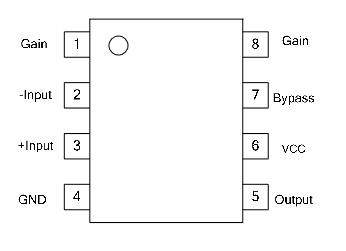
Applications of the IC
The IC LM386 is the most essential integrated circuit in the audio area, and it's found in the applications below.
- • Wien bridge oscillator
- • Power converters
- • Ultrasonic drivers
- • Small servo drivers
- • Intercoms
- • Line drivers
- • TV sound systems
- • Portable tape player amplifiers
- • AM to FM radio amplifiers
- • Audio boosters
- • Speakers of laptop and portable
- • Voice record from microphone, battery operated speakers
Schematic of the LM386 Audio Amplifier
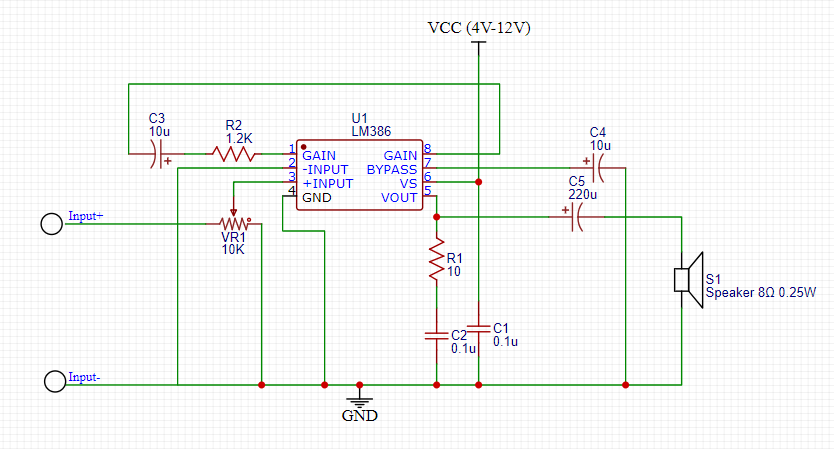
Schematic on the breadboard
